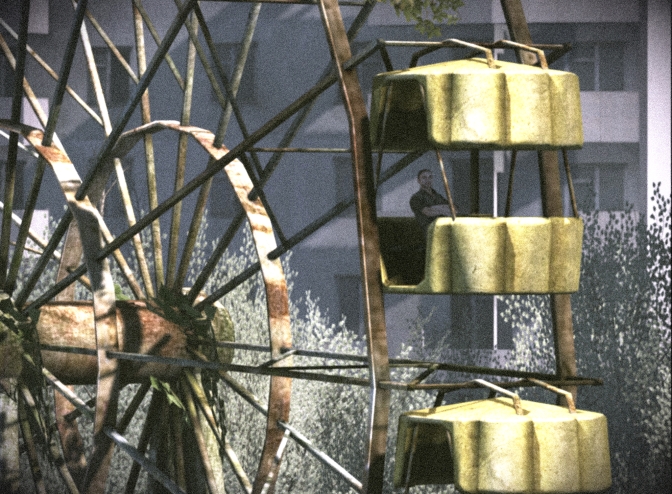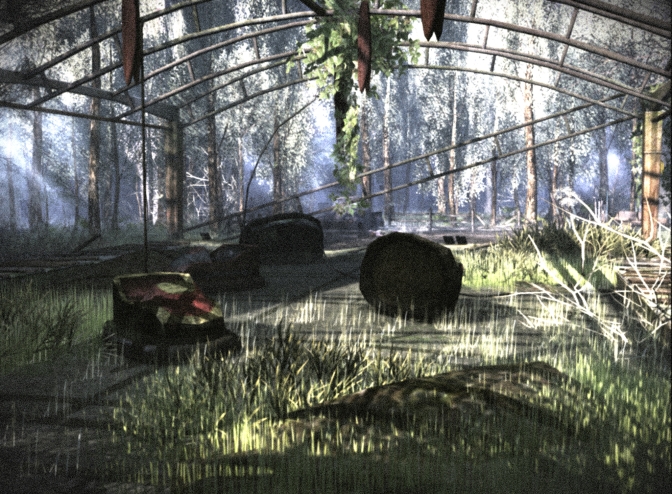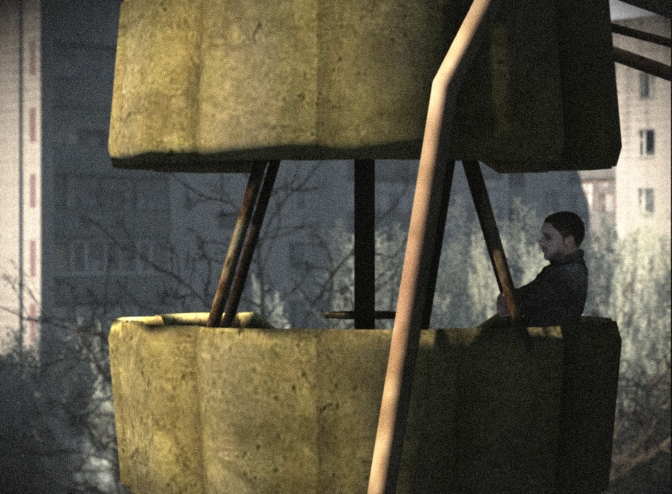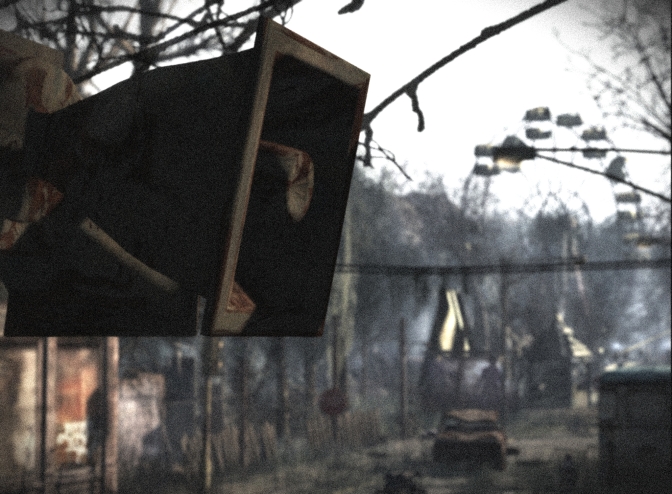
You know how it is, right? You start reading about something because there’s a item on the news because the date is significant; next thing you know you’re devouring whatever information you can find on the subject. Yesterday, this led to me watching “The Battle of Chernobyl,” a 2006 documentary about the response to the accident. You can watch it yourself on YouTube, although I should warn you I suspect that there’s a significant amount of bullshit hyperbole in this film: phrases like “a spray of fire charged with radioactive particles in fusion” automatically set off my bollocks detectors, and I’m pretty sure a four to five megaton explosion wouldn’t “wipe out half of Europe,” not to mention fairly doubtful that a four to five megaton explosion could have been a possibility in the first place (I’ve not found any mention of this anywhere else so far; the closest is a reference on Wikipedia which talked about the possibility of a serious secondary steam explosion, but nothing about this being anywhere near the megaton range). Update on this: see bottom of page.

But leaving all that aside, what the film does convey well are the incredible sacrifices made by the men sent to combat the problem: from the initial fire, where helicopters were flown over the building so that sand could be dropped in (most of those pilots died soon after) to the roof clean-up operation where reservist soldiers were ordered to shovel highly radioactive debris over the side of the building (because remote control robots failed there due to radioactive interference with their electronics). The film suggests that many, many more men have died over the years as a result of their involvement in Chernobyl than official figures indicate. My stomach twists when I watch the footage filmed of the men on the roof moving the debris as quickly as they can. Survivors talk of the metal taste in their mouths from the radiation, and photographs of the cleanup show a deadly white haze along the bottom where it has reportedly interfered with the film.

I feel humbled by these men’s bravery and sacrifice. And incredibly grateful.

My continuing explorations around the topic also brought me to Everwinter in SL, which describes itself as a ‘Post Apocalyptic Theme Park’. As sim creator Lauren Bentham points out in a notecard you are given on arrival, “Everwinter is fictional but inspired by the abandoned amusement park in the real world city of Pripyat, it is only my vision and not an accurate representation of Pripyat.” Nonetheless, the builds there of Pripyat icons (many by Death Row Designs) are of a higher quality that the builds featured on my post yesterday, and they include the famous ferris wheel and the nearby bumper car attraction. It’s also claimed that the audio message you can hear in Russian as you enter the sim “is the actual recording of the evacuation message played to the city of Pripyat following the nuclear disaster.” If you join the Everwinter group it’ll cost you $L150, but for that you get the right to rez, which can be very handy for photographers.

The VR capture of Pripyat does not end here, however. My trail across the internet led me in the end to The Chernobyl VR Project, a meticulously researched and photographed virtual tour of Pripyat, soon to be released for the Oculus Rift and other VR platforms. It’s a shame this doesn’t appear to include Google Cardboard, however the stunning 360 video trailer below can be viewed on any VR device (and you can also click and move the video itself if you don’t yet have any googles).
UPDATE: I’ve watched another documentary now (the excellent BBC drama documentary, ‘Surviving Disaster: Chernobyl’) and very similar claims are made there about the threat of a secondary thermal explosion. Although no claims are made about this being in the range of four to five megatons, the immediate blast range mentioned of 200 square kilometres (by my calculation, that’s a zone with about a five mile radius) seems roughly right for that yield. I also read some similar statements about the risk of a secondary explosion of that size on a web page elsewhere. The ‘wipe out half of Europe’ statement was given credence by the fact that the resulting radiation cloud from this explosion would have been absolutely huge.
Of course, spotting similar information in several places isn’t ever absolute proof of that information (it might be that all of those places got their information from the same source – or even from each other). I am astonished that this part of the story isn’t better known if it is as these reports suggest it was (see, for example, the BBC news page giving information about the accident twenty years later, which makes absolutely no mention of it whatsoever). In particular, the names of Alexei Ananenko, Valeri Bezpalov and Boris Baranov – the three men who volunteered to dive into highly radioactive water – knowing this would kill them (when they died shortly after, they reportedly had to be buried in lead coffins, their bodies were so radioactive) – in order to open valves which would drain the water tanks and prevent such an explosion should be known across all of Europe.
I wonder why this has not been reported better? I am leaving this as an update rather than editing the original article because I find the misinformation and lack of detail almost as alarming as the incident itself: I want the ignorant state I was in before spending time researching this (and still lacking a definite answer) to be clear.
UPDATE June 2019: It’s always important to address new information. In this case, the information concerns the fate of the three divers, Alexei Ananenko, Valeri Bezpalov and Boris Baranov. I understand that it is now known that these men did not die as a result of their dive to drain the water below the reactor core (two are still alive today), and the story of their death was part of a foklore exaggeration regarding their sacrifice. Of course, they should still be regarded as heroes in Europe, since they volunteered believing the mission would kill them and their actions saved countless lives. Actually, it’s great news that they survived the mission. It has made me really happy to learn this.
I’m leaving my original update in place rather than just editing the text because I think it’s important to show the original information as erroneous – it will still be found in plenty of places online.
Fascinating blogposts and research, Huck. I, for one, am old enough to remember the disaster and – being inHolland – also the impact it had overhere. Though, of course not as dramatic as for the people in the Ukraine and nearby the plant, I do recall the dairy farmers in the village where I live had to keep the cows in the stable for weeks so they would not graze possible radiation infected grass and me and my Dad spent a week getting rid of the spinach and some other vegetables from our land – due to those possibly being radiated (?) as well. Yeah, the Ukraine isn’t really next door, but the wind at that time brought the bad stuff to overhere. Ive seen the documentaries over time, and it is ..well, terrifying and I cannot imagine how it must have been for those living in that area. Thanks for your blogposts and I will surely check out those places in SL soon.
LikeLiked by 1 person
really wonderful post Huck. As a good one does, it’s prompted me to pull up images and articles from that time. Love the images that you captured also.. Everwinter is so well done and an interesting place to park for awhile. You’ve reminded me I’ll have to get back soon.
LikeLiked by 1 person
The New Yorker had a interesting and quite sobering article about Chernobyl–The Battles of Chernobyl, 26 April 2016 (http://www.newyorker.com/tech/elements/the-battles-of-chernobyl) where it was stated that the meltdown was precipitated by a demonstration of safety procedures that went horribly awry. Well worth a read.
LikeLiked by 1 person
Really interesting article, Kerena – thanks! The shame of it is that those men either died thinking they had caused to accident or were sent to prison – and it wasn’t until years later that the design flaw was admitted to. Terribly sad.
LikeLike